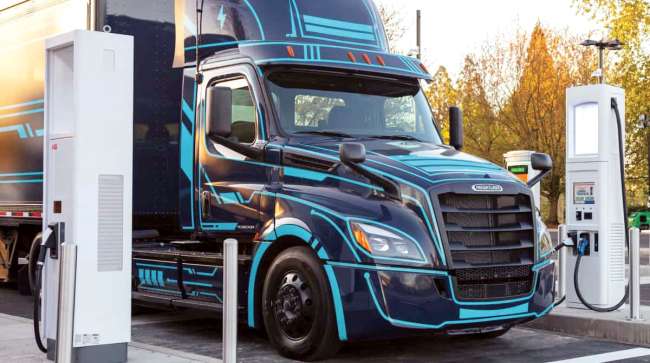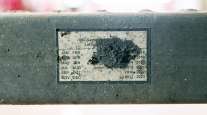TMC Releases Summer Survey Results

[Stay on top of transportation news: Get TTNews in your inbox.]
American Trucking Associations’ Technology & Maintenance Council conducted three surveys during the late spring and summer months hoping to shed light on three important challenges fleets face in setting strategies and reacting to regulatory mandates
Two of the surveys relate to the impacts of soon-to-be-implemented Environmental Protection Agency regulations, with the third addressing the industry’s methods of dealing with the persistent and perennial tight market for technicians.
“These surveys provide TMC important insights into two of the most pressing issues facing fleets today — adapting to increasingly stringent emissions regulations and effectively managing technician retention,” TMC Executive Director Robert Braswell said. “The results indicate fleets are wary of electric alternatives to traditional diesel powertrains, and fleets can be successful in retaining new technician hires if they have a well-considered plan in place to do so.”
In September, TMC published the results of two fleet surveys designed to gauge emissions-related regulatory impacts. The first report, “Greenhouse Gas (GHG) Phase 3 Update,” was conducted on behalf of ATA’s Environmental and Energy Policy Committee to assist in developing policy positions and feedback on EPA’s Greenhouse Gas Phase 3 regulation. The second report, “Impact of Emissions Regulations on Commercial Vehicle Procurement,” sought information to evaluate how mandates in commercial vehicle assets may be affecting early procurement planning for Classes 6-8 vehicles.

Legler
The survey supporting the GHG Phase 3 report, which was a follow-on to a previous survey conducted in the spring of 2023, focused on implementation of battery-electric vehicles and fuel cell electric vehicles. New results indicate that there is very limited experience in adoption of these technologies and a reluctance in most fleets to expand their limited deployments or to set goals to do so. Fleets expect both a much longer payback for these vehicles as compared with current inventory as well as significant lead times for development of on-site charging infrastructure because of needed upgrades to electrical service.
The first part of the survey inquired as to various fleet demographic characteristics to qualify the nature of the data obtained from the cohort. Responding fleets included local, regional and national service areas, covering all geographic areas of the country, with fleet sizes ranging from small to large and a variety of operational types and equipment duty cycles.
The remainder of the survey explored various aspects of experiences and planning for deployment of BEVs and FCEVs and related fleet infrastructure. While less than 1 in 7 fleets indicated that their customers had engaged them in discussions to request the fleets’ use of BEVs/FCEVs, nearly 40 percent said they were exploring adding these vehicles to their fleets. While very few fleets reported operating EVs, they did communicate concerns regarding this equipment meeting their expectations for range, serviceability, charging times, maintainability, durability, cost, ability to develop on-site charging infrastructure and the availability of public charging infrastructure. On a scale of 1-5, only durability rated as slightly more than neutral in the weighted average — 2.78 — with varying degrees of dissatisfaction on the other factors.

Return on investment for EVs is anticipated to be beyond seven years, compared with current technology payback expectations averaging five years. Fleets anticipate most of their maintenance of EVs will be outsourced, or a combination of in-house and contract maintenance.
None of the fleets responding indicated that they would rely exclusively on public charging infrastructure, but most anticipated needing both on-site and public charging to support their fleets. As there are few EVs in operation, there is only limited experience and planning regarding the need for the number and capability of on-site charging ports; however, responding fleets report lead times for obtaining required support from the utility grid ranging from as little as 12-24 months to more than 36 months.
Fewer than a third of fleets indicated their expectations to incorporate EVs into their fleets in the next three years and likewise have not incorporated EV goals into their sustainability planning.
The second survey report indicated that the regulations are likely to impact capital expenditures in the procurement of Class 8 vehicles, with a significant percentage of fleets indicating that they would pursue either a pre-buy, a low-buy or combination strategy.
McLeod Software CEO Tom McLeod explores the potential for artificial intelligence to boost efficiency and build resilience. Tune in above or by going to RoadSigns.ttnews.com.
While there was some indication of a pre-buy/low-buy consideration in Class 6 procurement, the majority of fleets operating these classes noted they would not be changing their procurement practices. For Class 7, most fleets reported they would change their strategy, with a roughly even divide among pre-buy, low-buy and combination strategies.
Onboarding Practices Impact New Technician Retention
TMC’s third survey was conducted in May and June on behalf of TMC’s S.5 Fleet Maintenance Management Study Group. It requested TMC fleet executive level and service provider corporate level members to provide information regarding their respective onboarding practices for newly hired technicians. The results of this survey were presented by a panel of experts at TMC’s 2024 Fall Meeting in Raleigh, N.C.
Respondents reported employing a wide range of technician workforces, from as small as three to as many as 3,000, with as few as one or two new hires per month to more than 20. The number of shops operated ranged from fewer than five to more than 20. A majority of respondents have some type of documented on-boarding process (78 percent). Nearly 9 in 10 companies report retention rates of more than half of new hires after one year, and half of the companies report retention of more than 75 percent. Retention rates are only slightly more favorable at the six-month mark. The greatest unfavorable change in retention occurs between three and six months of employment.
A formal technician onboarding process is reported by 72 percent of respondents, with an average of two weeks from hire date to start date. Slightly more than half communicate their process with new hires between the hire date and start date, primarily via email. More than 6 in 10 do not prepare the workspace of a new employee workspace until the date of hire. Uniforms are typically ordered on or after the starting date. Half of the companies set up the new hire in their information technology system on the date of hire, with 35 percent doing so a week ahead of time.
Want more news? Listen to today's daily briefing above or go here for more info
Nine out of every 10 companies said they conduct technician orientations one employee at a time with nearly 80 percent saying they have a one-on-one process. Slightly fewer than half of companies responding said they provide new hires a “welcome kit” consisting of policies and procedures as well as the company’s history and related information. All companies stated they have either formal or informal ways of taking feedback from new hires, with 9 of 10 requesting feedback between one week and one month from the start date. The overwhelming majority of companies said they train their managers in the onboarding process. Peer mentor programs are reported by 85 percent of respondents, with most of these mentors being formally trained or certified. All companies said they assign a mentor to a new hire.
Most companies do not provide personal tools to new hires. Only 4 in 10 conduct skills assessments before hire. About two-thirds of respondents said they conduct exit interviews, and slightly less use that information to update their onboarding processes.
Four in 10 respondents said they pay a sign-on bonus to new technicians, commonly ranging from $1,000 to $5,000, and nearly 3 in 4 pay referral bonuses to current employees.
The survey reports can all be found at TMC’s public-facing website, under the Information Reports section of the Resources menu, at https://tmc.trucking.org/study-group-information-reports.





